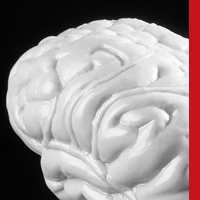1 Hayden, M. R., (1983). “Reflections on the History of Huntington’s Chorea”. Trends in Neuroscience. 6, 122-124.
2 Huntington, G., (1872). “On Chorea”. Medical and Surgical Reporter. 26, 317-321.
3 Usella, J. F., et al., (1983). “A Polymorphic DNA Marker Genetically Linked to Huntington’s Disease”. Nature. 306, 234-238.
4 Mangiarini L. et al., (1996). “Exon 1 of the HD Gene with an Expanded CAG Repeat is Sufficient to Cause a Progressive Neurological Phenotype in transgenic mice”. Cell. 87, 493-506.
5 Ramaswamy, S., J. L. McBride y J. H. Kordower. (2007), “Animal Models of Huntington’s disease”. Institute of Laboratory Animal Resources Journal 48, 356-373. Review. |
 |